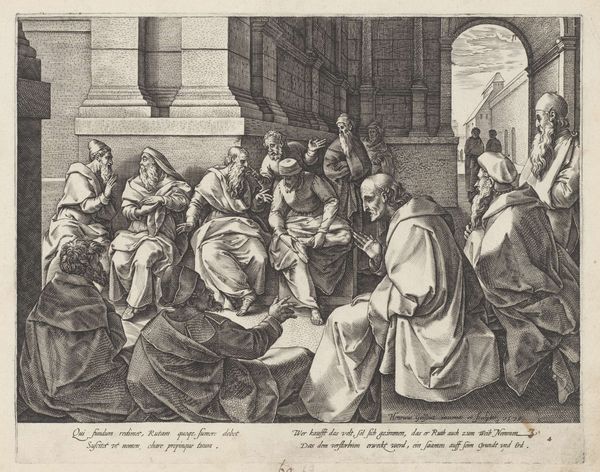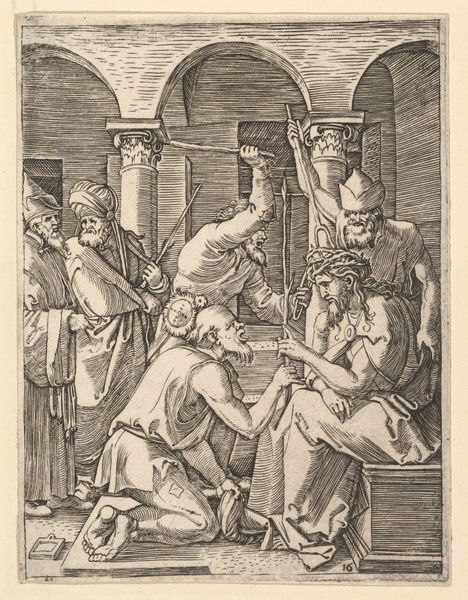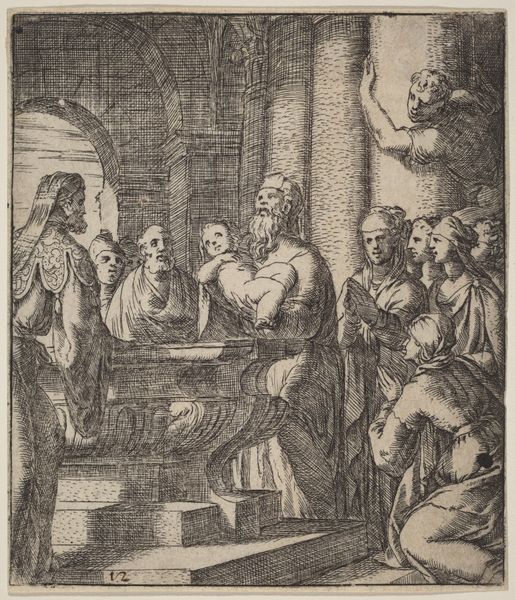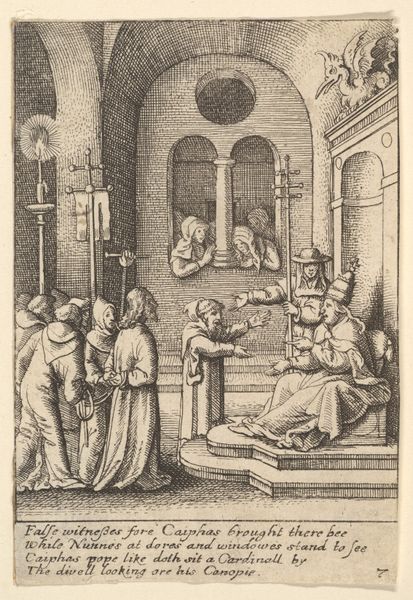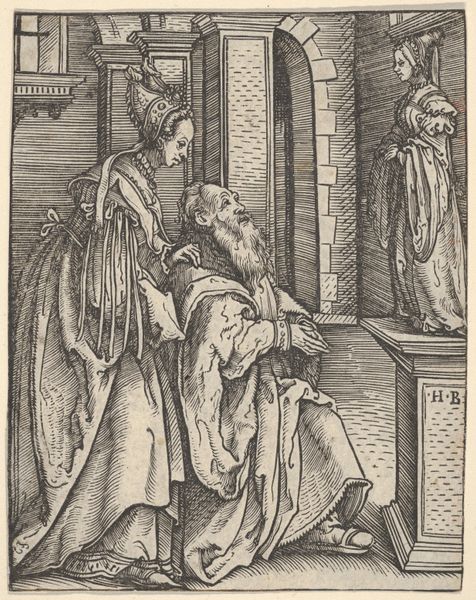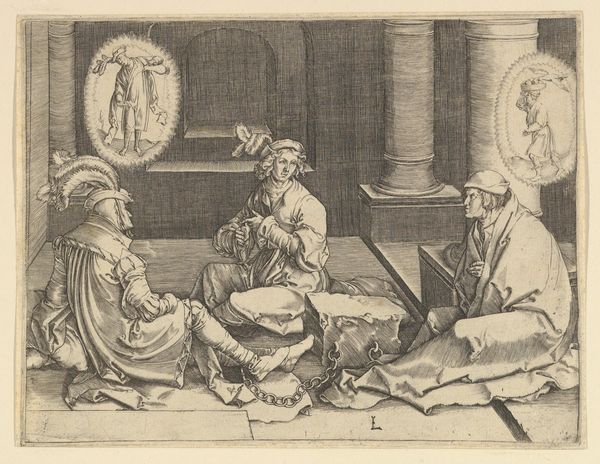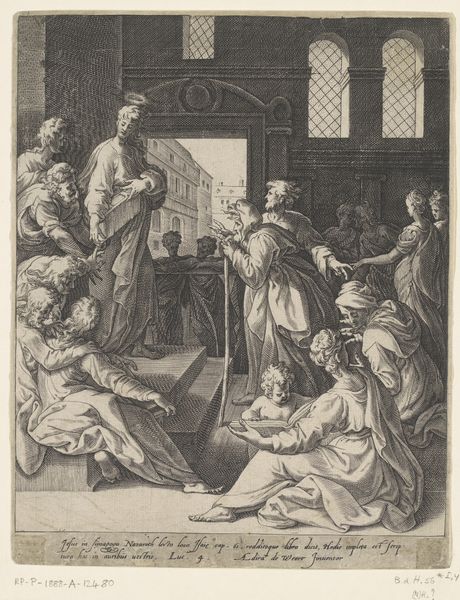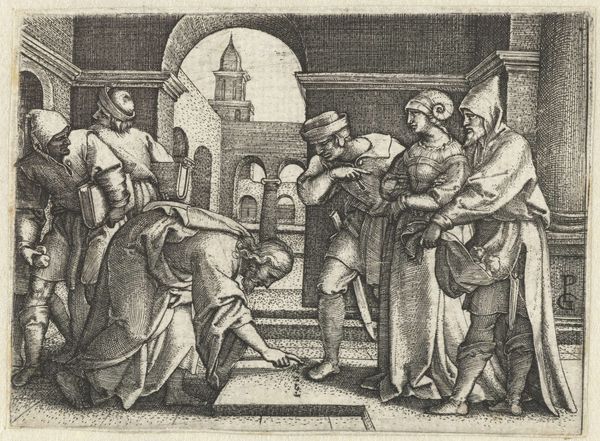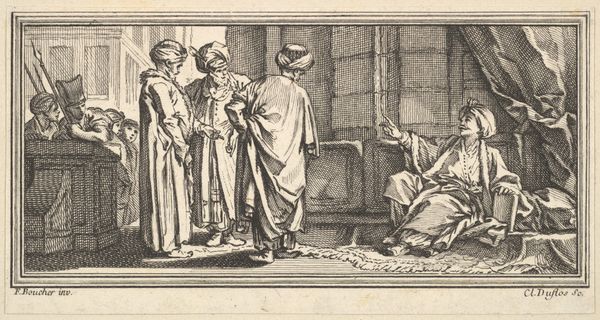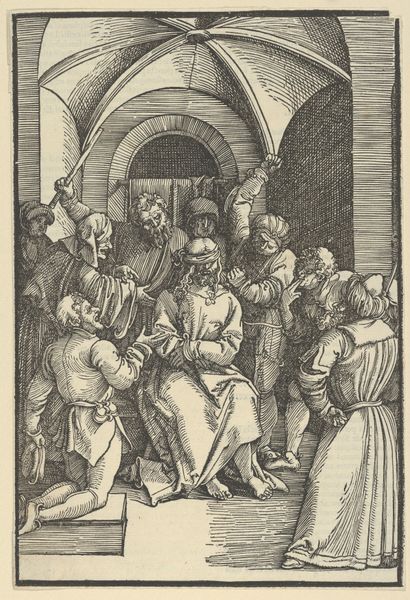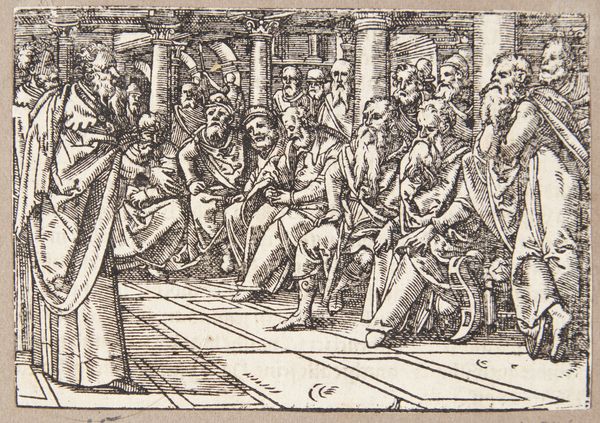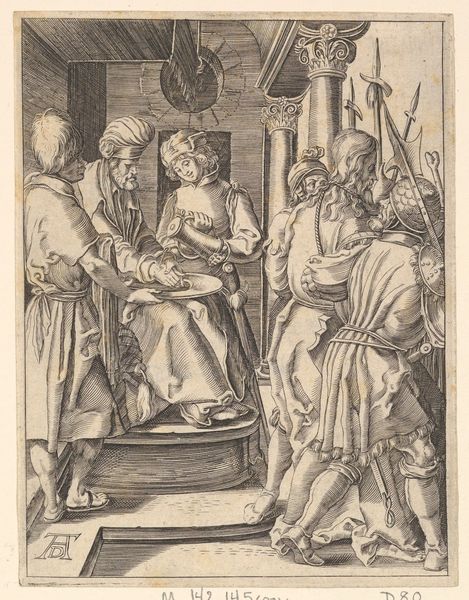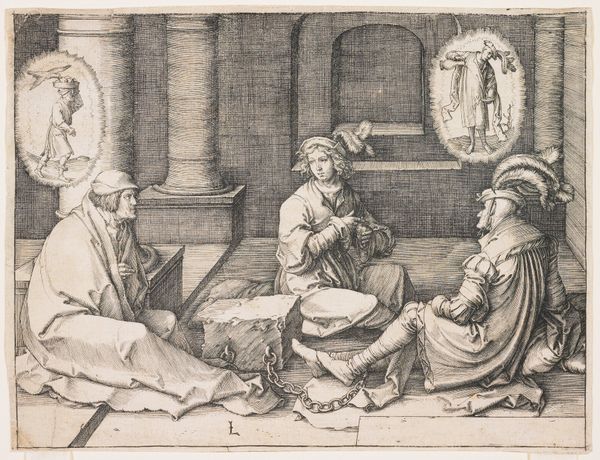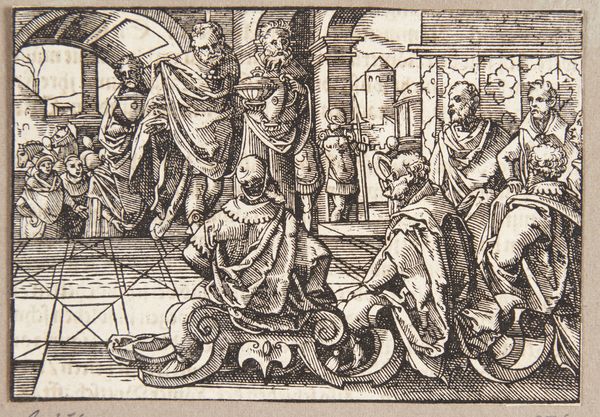
print, etching
#
narrative-art
#
baroque
# print
#
etching
#
figuration
#
history-painting
Dimensions: plate: 10.9 x 14.9 cm (4 5/16 x 5 7/8 in.) sheet: 20 x 25 cm (7 7/8 x 9 13/16 in.)
Copyright: National Gallery of Art: CC0 1.0
Curator: We're looking at an etching titled "Consolation of the Imprisoned" by Conrad Meyer. Although we do not have a specific date of completion for this print, it clearly draws on Baroque sensibilities. Editor: Well, first impression: it’s stark, but also strangely… tender? Despite the bleak setting and the subject matter, there’s a real sense of human connection etched – pun intended – into the scene. Curator: Yes, the choice of etching as a medium is crucial here. The etched line lends itself to the kind of detailed figuration required for complex historical narratives. Consider also the historical context: Prints like this were important for disseminating information and social commentary more broadly. They become consumable objects and powerful communicative devices, enabling access to this imagery by those beyond the immediate wealthy and/or ruling class. Editor: Absolutely. And thinking about consumption, I'm struck by the contrast of wealth and poverty on display. You have religious figures attending to naked, shackled prisoners. The details of their robes are almost fetishistic—look how much energy the artist puts into representing their folds. The church hierarchy becomes this very material object in tension with those on the lowest rungs. Curator: A keen observation! And consider also the compositional arrangement. The architectural background seems almost porous. Although rendered with sharp detail, Meyer's lines creates multiple planes that appear to collapse on one another in a dizzying show of the power dynamic that exists both literally, physically, and conceptually throughout. Editor: It really makes you think about who benefits, doesn't it? The suffering is laid bare – the figures on the right seem desperate for any shred of solace, which amplifies a spiritual reading. Yet all the social weight and resources rests with those standing. There's something so fundamentally human and painful being represented, and it translates effectively. Curator: Agreed. It pushes us to think critically about how we consume imagery, what stories are privileged and made widely accessible, and ultimately how art reflects—and shapes—social realities. Editor: It's interesting how simply observing a printed image from so long ago can start us on this journey... and in a strange way, it still speaks to this moment. Thanks for guiding the way.
Comments
No comments
Be the first to comment and join the conversation on the ultimate creative platform.
